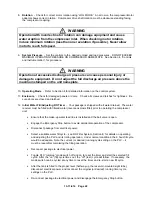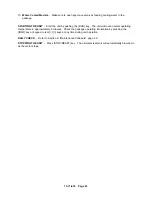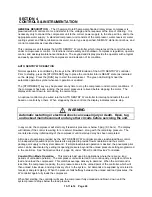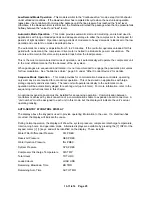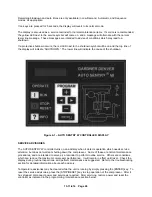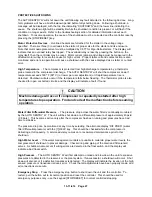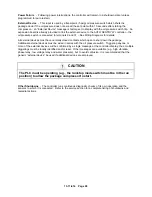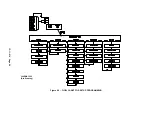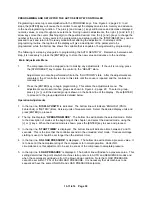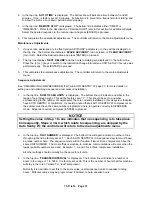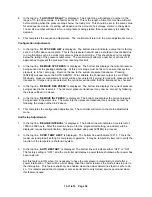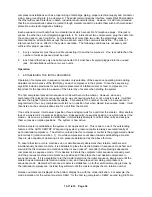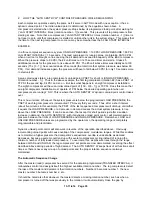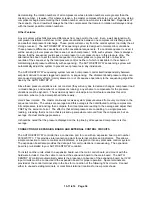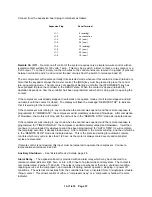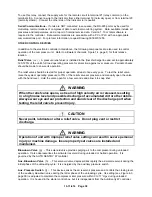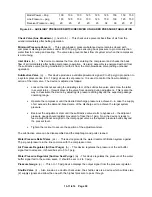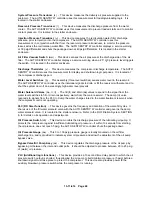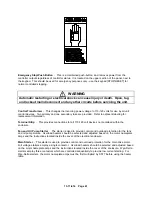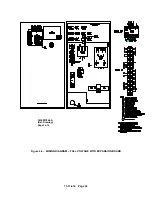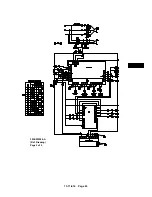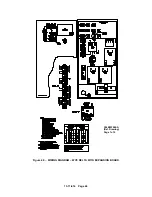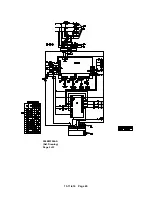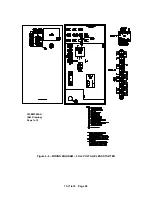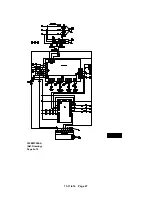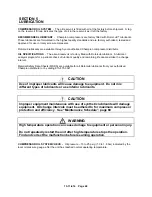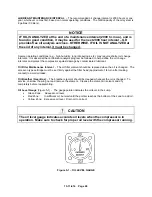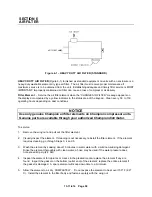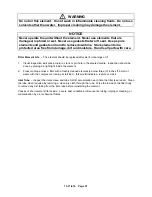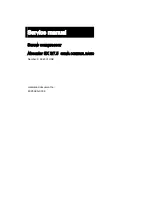
13-11-614 Page 36
decrementing the rotation numbers of all compressors whose rotation numbers were greater than the
missing number. Likewise, if for whatever reason, the master compressor fails to carry out its role, all lag
compressors begin decrementing their rotation number until a new master is established. Regardless of
the scenario, the end result will always be that the compressors that remain in rotation will always end up
with the lowest possible rotation numbers.
Other Features
Any air system will exhibit pressure differences from one point to the next. Even a well designed multi-
compressor installation will show ‘minor’ pressure variations between one compressor’s discharge point
and another compressor’s discharge. These points will also vary from the central system (normally the air
storage receiver). The AUTO SENTRY W sequencing system is designed to tolerate minor variations.
These pressure differences wreak havoc with conventional sequencers. If a central sequencer is used, it
will be sensing a lower pressure than is seen at each compressor. With such systems, there is always a
chance that the sequencer could cause a compressor to over pressure due to this pressure drop. The
alternative has been to set the central sequencer to a lower pressure to prevent this or allow local
override of the sequencer by the local pressure control, neither of which is desirable in the scheme of
maintaining plant pressure efficiently with sequencing. The AUTO SENTRY W sequencing system will
automatically adjust the system to prevent over pressures in any individuals.
The AUTO SENTRY W sequencing system lets each compressor control itself independently between
setpoints derived to cause staggered operation, or sequencing. The aforementioned pressure drops can
also cause derogatory effects (mainly skewed, or out of sequence operation) to the sequencing algorithm
used by the AUTO SENTRY W.
Since these pressure variations are not constant (they will vary due to demand changes, compressor load
/ unload changes, and number of compressors running), any scheme to compensate for the pressure
variations must be dynamic. The exclusive dynamic unload point control feature enables this error
correction scheme to be accomplished rather easily.
Here’s how it works: The master continually receives system pressure values from every machine in the
sequence rotation. The values are averaged and this average is then distributed to all lag compressors.
All compressors, lead and lag, then compare their local pressure reading to the average and adjust their
PSET by the amount of error. The effect is that all compressors are controlling to a single pressure
reading, a reading that is not one that is picked up somewhere removed from the compressor, but an
average of actual discharge pressures.
It should be noted that the pressure displayed on the top line by all sequenced compressors is this
average.
CONNECTION OF EXPANSION BOARD AND EXTERNAL CONTROL CIRCUITS
The AUTO SENTRY W controller has a connection port for use with an expansion board, part number
301EWC1173. This provides interconnection points for external controls and indicators. This allows
simple connection to remote controls and indicators, or integration into any plant wide controls system.
The expansion board also provides the data port for communications in sequencing. The expansion
board is pre-installed in your AUTO SENTRY W controller.
To install on other units, stack the expansion board over the main control board, and mount with the
hardware included. Use the cable to connect the expansion board to the main board. The AUTO
SENTRY W controller automatically detects the presence or absence of the expansion board, but 120V
input circuits must be connected to the expansion board for proper operation. Spare terminals are
provided at the control terminal strip in the box for connection of the following 120v circuits. Connect
either to unused existing terminals, or mark blank terminal locations for new points shown.
Summary of Contents for ROTORCHAMP EWF99C-100
Page 7: ...13 11 614 Page 7 Figure 1 2 PACKAGE ILLUSTRATION AIR COOLED 309EWF797 A Ref Drawing ...
Page 8: ...13 11 614 Page 8 Figure 1 3 PACKAGE ILLUSTRATION WATER COOLED 310EWF797 A Ref Drawing ...
Page 9: ...13 11 614 Page 9 Figure 1 4 AIR COOLED SCHEMATIC 307EWF797 A Ref Drawing ...
Page 10: ...13 11 614 Page 10 Figure 1 5 WATER COOLED SCHEMATIC 308EWF797 A Ref Drawing ...
Page 29: ...13 11 614 Page 29 Figure 4 2 FLOW CHART FOR SETUP PROGRAMMING 300EWC1255 Ref Drawing ...
Page 43: ...13 11 614 Page 43 303EWF546 A Ref Drawing Page 2 of 2 ...
Page 45: ...13 11 614 Page 45 304EWF546 A Ref Drawing Page 2 of 2 ...
Page 47: ...13 11 614 Page 47 305EWF546 A Ref Drawing Page 2 of 2 ...

